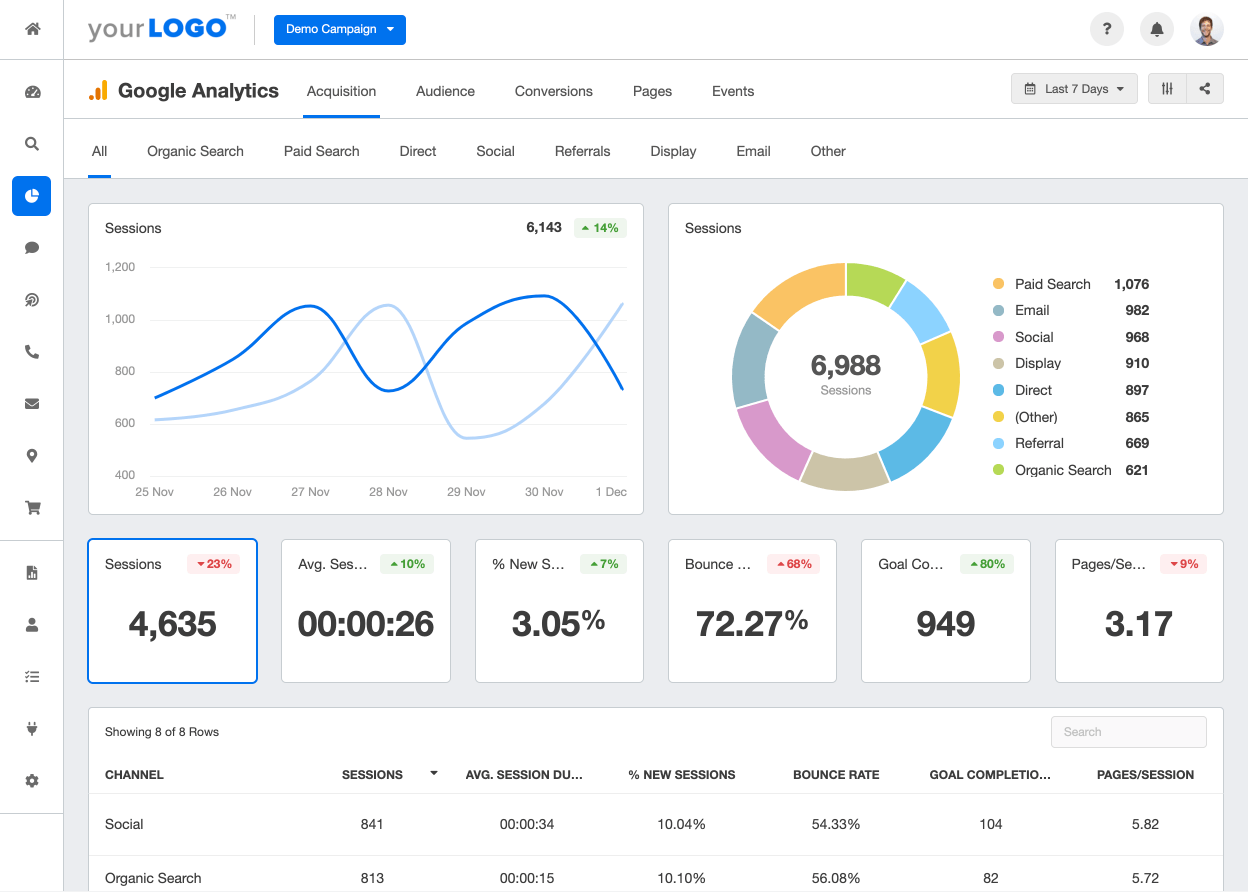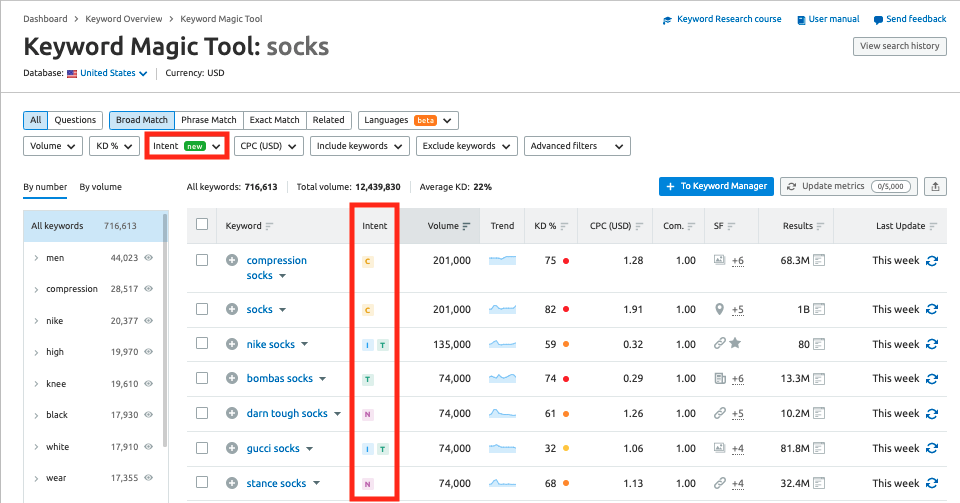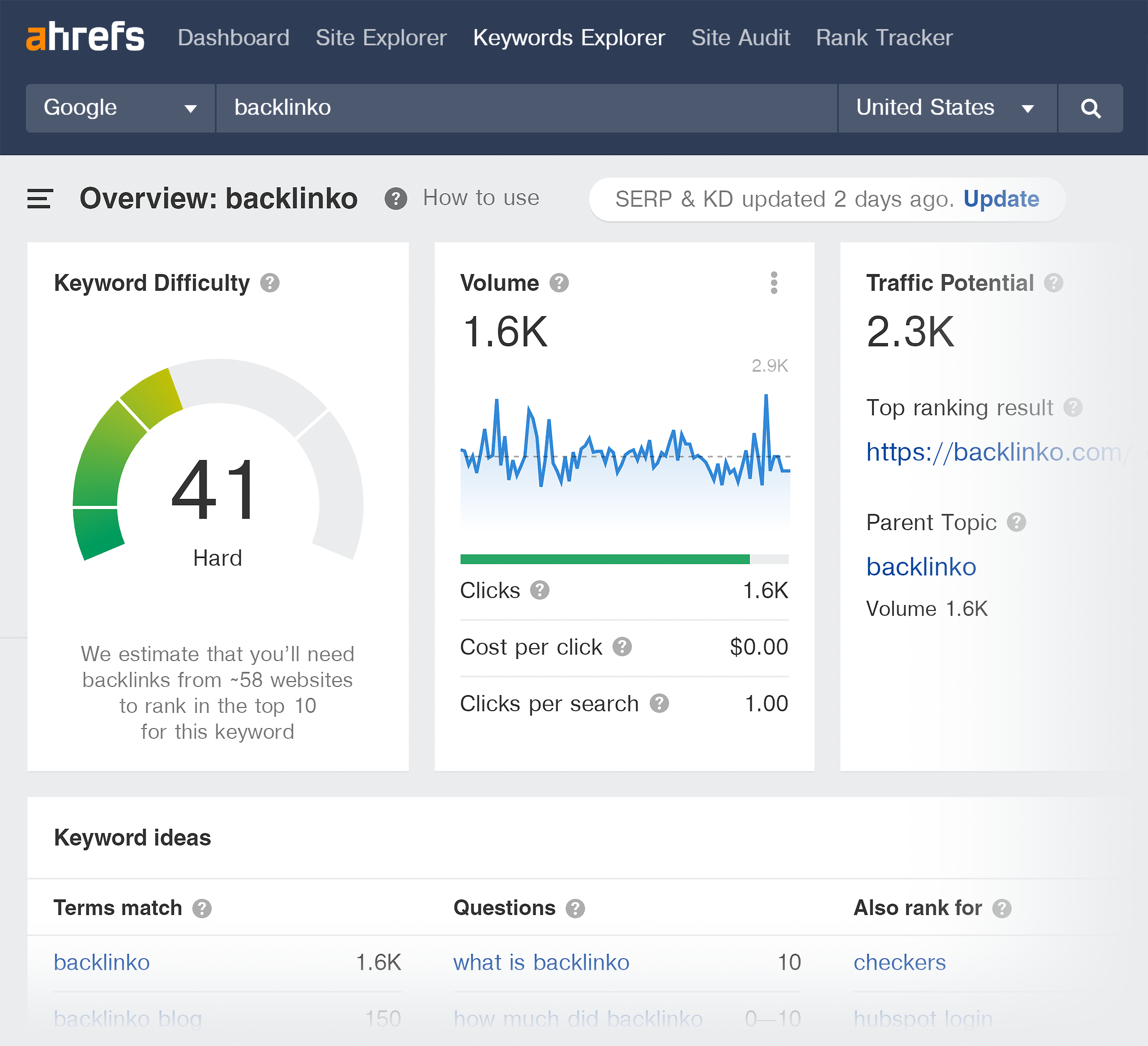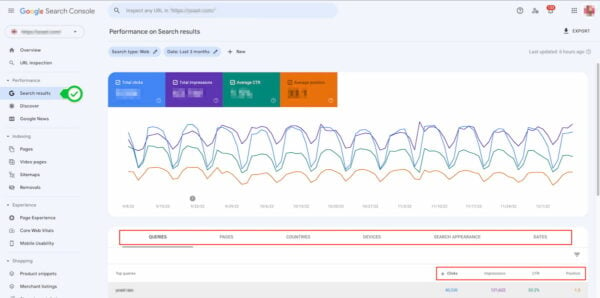Mastering On-Page SEO: Essential Strategies for Boosting Your Website's Search Rankings
Performance Tracking in On-Page SEO
The Role of Performance Tracking in SEO
In the realm of on-page SEO, performance tracking is not just a luxury; it's a necessity. It's akin to setting out on a journey with a map and compass; it guides your SEO strategies and helps you understand if you're heading in the right direction. Without tracking, you're essentially flying blind in the digital landscape, unaware of whether your efforts are paying off or if they need adjustment.
Utilizing Google Analytics for SEO Performance
Google Analytics is a powerful tool in the arsenal of SEO. It's like having a high-powered microscope through which you can scrutinize the minutiae of your website's performance. With Google Analytics, you can track a wealth of information, from the number of visitors to your site, how long they stay, and how they interact with your content. This data is invaluable for understanding the impact of your on-page SEO efforts.

Key Metrics to Monitor in Google Analytics
Organic Search Traffic: This metric shows the number of users who found your website through a search engine. An upward trend in this number is a good indicator that your SEO strategies are working.
Bounce Rate: This represents the percentage of visitors who leave your site without interacting with it. A high bounce rate might indicate that your content isn't engaging or relevant to what users are searching for.
Conversion Rate: Tracking conversions – whether they're sales, sign-ups, or another valuable action – helps in assessing the effectiveness of your page in driving business goals.
Average Session Duration: This metric provides insights into how long users are staying on your page. Longer durations can imply more engaging content, which is a positive signal to search engines.
The Importance of Tracking Individual Keywords
While modern SEO is less about individual keyword rankings and more about overall quality and relevance, tracking your primary keywords is still vital. It gives you a direct insight into how well your targeted strategies are performing. Tools like Ahrefs can be instrumental in this regard, providing detailed information on keyword rankings, difficulty, and search volume.

Why Track Keywords?
To Gauge Performance: Understanding which keywords are driving traffic helps in evaluating the success of your SEO strategies.
To Identify Opportunities: Keyword tracking can reveal gaps in your SEO plan, indicating areas for improvement or new keywords to target.
To Stay Ahead of Competitors: By monitoring how keywords perform, you can stay competitive and adapt your strategies in response to market changes.
Performance tracking is the compass guiding your on-page SEO journey. Utilizing tools like Google Analytics and Ahrefs for this purpose is not just about collecting data; it's about gaining insights to continually refine and improve your SEO strategies. By effectively tracking performance, you ensure that your on-page SEO not only achieves its intended goals but also drives meaningful results for your business.
Keyword Tracking in On-Page SEO
The Essence of Keyword Tracking
In the dynamic world of on-page SEO, keyword tracking stands as a crucial component. It's the process of monitoring how well your website ranks for specific keywords and phrases, essential for gauging the effectiveness of your SEO strategies. Tracking individual keywords might seem daunting due to factors like localization and personalization, but it's a vital step in understanding your SEO campaign's success.
Tools and Techniques for Effective Keyword Tracking
Using Ahrefs for Keyword Performance
Ahrefs is a popular tool among SEO professionals for keyword tracking. It allows you to monitor your website's ranking for selected keywords, offering insights into their performance over time. This information is pivotal in adjusting your SEO strategies to enhance your site's visibility.

Importance of Keyword Tracking
Directional Insight: Tracking keywords helps you understand if your SEO efforts are moving in the right direction, especially with your primary keyword phrase.
Performance Assessment: By observing the fluctuations in keyword rankings, you can gauge the effectiveness of your on-page optimizations and content strategies.
Competitive Analysis: Keyword tracking isn’t just about your website’s performance; it’s also about understanding the competitive landscape. You can see how your competitors are ranking for the same keywords, which is invaluable for strategizing.
The Nuances of Keyword Tracking
While tracking keywords, it's crucial to understand that SEO is no longer just about ranking for a single term. It's about the broader context and related keywords. Here's what you need to consider:
Localization and Personalization Effects: The way keywords rank can vary significantly based on the user's location and search history. This makes tracking more complex but also more vital for targeted SEO strategies.
Long-Tail Keywords: These are longer and more specific keyword phrases that visitors are likely to use when they’re closer to a point-of-purchase. Tracking these can uncover valuable opportunities for attracting highly targeted traffic.
Keyword Difficulty: This metric, often provided by tools like Ahrefs, helps in assessing how hard it will be to rank for a specific keyword. It's an essential factor in keyword selection, especially for newer or less authoritative websites.
Keyword tracking is an indispensable part of a successful on-page SEO strategy. By utilizing tools like Ahrefs and understanding the complexities involved in keyword rankings, you can fine-tune your SEO efforts for maximum impact. Remember, the goal is not just to track but to analyze and act upon the insights gained, ensuring your website stays relevant and visible in the ever-evolving search landscape.
Crawlability and Indexing in On-Page SEO
Understanding Crawlability
Crawlability is a fundamental concept in SEO, referring to a search engine's ability to access and crawl through the content of a webpage. If a page isn't crawlable, it simply won't appear in search engine results, regardless of its content quality.
Ensuring Your Page is Crawlable
Robots.txt File: This file guides search engine crawlers about which pages to crawl and which to avoid. Ensure your important pages are not being inadvertently blocked in your robots.txt file.
No Index Tags: These tags instruct search engines not to index certain pages. Scrutinize your website to confirm you're not using no index tags on pages you want to rank.
Tools for Checking Crawlability: Utilize tools like Google's Search Console or Screaming Frog SEO Spider. These tools help in identifying crawlability issues, such as pages blocked by robots.txt or server errors.
The Importance of Page Indexing
Indexing comes after crawlability. Once a search engine crawler accesses your page, the next step is for the page to be indexed, meaning it is added to the search engine's database.

How to Ensure Your Page is Indexed
Google Search Console: Use the "URL Inspection" tool in Google Search Console to see if a page is indexed. If not, you can request indexing directly.
Site Architecture: Pages buried too deep within a website's structure might not get indexed. Ensure important pages are no more than three clicks away from the homepage.
Backlinks: Acquiring backlinks to a page can aid in getting it indexed, as search engines discover new content through links.
Targeting the Right Keywords
The Significance of Keyword Selection
Choosing the right keywords to target is an art and a science in SEO. It's about understanding not only what your audience is searching for but also what your website can realistically rank for.
Steps for Choosing the Right Keywords
Keyword Research: Tools like Ahrefs' Keyword Explorer are crucial for this process. Look for keywords with a suitable balance of search volume and competition.
Understanding Keyword Difficulty (KD): Newer or less authoritative websites should aim for keywords with lower KD scores, as these are generally easier to rank for.
Competitor Analysis: Assess what keywords your competitors are ranking for and their website metrics. This analysis can provide a benchmark for what you need to achieve to compete effectively.
Keyword Qualification
Search Intent: Identify whether the keyword matches the intent of your target audience. Keywords can have different intents - informational, transactional, navigational, or comparison.
Avoiding Keyword Cannibalization: Ensure you’re not targeting the same keyword across multiple pages, which can dilute your SEO efforts.
Hub and Spoke Model: This strategy involves creating a main 'hub' page targeting a primary keyword, supported by 'spoke' pages targeting related, long-tail keywords with different user intents.
Crawlability and indexing are the bedrock of any SEO strategy, ensuring that your content is accessible and recognized by search engines. Alongside this, targeting the right keywords is crucial for driving relevant traffic to your website. By understanding and implementing these key aspects, you can significantly enhance your site's SEO performance, ensuring it not only ranks well but also attracts the right audience.
Avoiding Keyword Cannibalization
Defining Keyword Cannibalization
Keyword cannibalization occurs when multiple pages on your website compete for the same keywords. This internal competition can dilute the effectiveness of your SEO efforts, as search engines struggle to determine which page is most relevant for a particular query.
Identifying Keyword Cannibalization
SEO Audits: Conduct regular SEO audits using tools like Screaming Frog or Ahrefs. These tools can help identify if multiple pages are targeting the same primary keyword.
Manual Checks: Regularly review your content to ensure that each page targets a unique primary keyword or keyword phrase.
Strategies to Avoid Keyword Cannibalization
Unique Primary Keywords: Assign a unique primary keyword to each page, ensuring that they cater to different aspects of a topic or different user intents.
Consolidate Similar Content: If multiple pages target the same keyword, consider merging them into a single comprehensive page. This can strengthen your page’s authority and relevance.
Clear Internal Linking Structure: Use internal linking to signal to search engines which page is most important for a specific keyword.
Content Hierarchy: Establish a clear content hierarchy on your site, with broader topics covered in main pages and more specific topics in subpages.
Avoiding keyword cannibalization is crucial for a well-optimized website. It ensures that your pages are not competing against each other, but rather working together to enhance the overall visibility and ranking of your site on search engines.
Satisfying Search Intent
The Importance of Search Intent
Search intent refers to the purpose behind a user's search query. Understanding and satisfying search intent is crucial for on-page SEO, as it directly influences how well a page performs in search results.
Types of Search Intent
Informational Intent: Users looking for information or answers to questions. Example: "How to tie a tie."
Transactional Intent: Users intending to make a purchase or engage in a transaction. Example: "Buy running shoes online."
Navigational Intent: Searches aimed at finding a specific website or page. Example: "Facebook login."
Comparison Intent: Users comparing products, services, or brands. Example: "Samsung vs. iPhone."
Aligning Content with Search Intent
Content Structure: For informational intent, focus on educational content that provides in-depth answers. For transactional intent, highlight products or services with clear calls to action.
Keyword Usage: Ensure the primary keyword reflects the search intent. For example, target 'how-to' keywords for informational content.
User Experience: Tailor the page layout and design to match the intent. Informational pages should be easy to read and navigate, while transactional pages should streamline the purchasing process.
Quality Content: Regardless of intent, your content should be high-quality, relevant, and offer value to the user.
Satisfying search intent is not just about attracting users to your site; it's about delivering what they are seeking. By aligning your content with the user's search intent, you not only improve your chances of ranking higher in search results but also enhance the user experience, leading to higher engagement and conversion rates.
Title Tag Optimization
The Significance of Title Tags in SEO
Title tags are one of the most crucial elements in on-page SEO. They provide a concise preview of the content on a page and are a primary signal to search engines about the page's topic. Optimizing title tags is essential for improving search rankings and click-through rates.
Key Aspects of Title Tag Optimization
Incorporate Primary Keyword: Your title tag should include the primary keyword you're targeting. This helps search engines understand what the page is about and improves relevance for user queries.
Clarity and Relevance: The title should clearly indicate the content of the page. Misleading titles can lead to high bounce rates, negatively impacting SEO.
Length Considerations: Ideal title tags are between 50-60 characters to ensure they are displayed fully in search results without being truncated.
Uniqueness: Each page's title tag should be unique to prevent confusion for both users and search engines.
Click-Worthy Titles: Beyond just including keywords, titles should be compelling enough to encourage users to click. This can be achieved by using action words, numbers, or posing questions.
Common Pitfalls to Avoid
Overstuffing with keywords.
Creating generic titles that lack distinctiveness.
Neglecting to reflect the page’s content accurately.
Title tags are the first impression users have of your webpage in search results. Optimizing them for both search engines and users is vital for driving traffic and improving your site's overall SEO performance.
Effective Use of H1 Tags
The Role of H1 Tags in On-Page SEO
H1 tags are used to denote the main heading of a page and play a significant role in structuring content for both users and search engines. They help in organizing content and improving readability, while also signaling the primary focus of the page to search engines.
Best Practices for H1 Tags
Include Primary Keyword: Your H1 tag should contain the primary keyword to reinforce the topic of the page to search engines.
One H1 Tag Per Page: Traditionally, it’s recommended to have only one H1 tag per page. This tag should be used for the main title of the page.
Clear and Descriptive: The H1 tag should be informative and give a clear idea of what the content will be about. Avoid vague or overly broad headings.
Distinct from Title Tags: While both should contain the primary keyword, the H1 tag can be more detailed and descriptive compared to the concise title tag.
Technical Considerations
Ensure that the H1 tag is coded correctly in the HTML structure of the page.
Avoid using multiple H1 tags, unless it’s contextually appropriate in HTML5 documents.
Effective use of H1 tags contributes significantly to on-page SEO. They not only help in structuring your content effectively but also play a key role in enhancing the visibility and relevance of your pages in search engine results. Ensuring that H1 tags are well-crafted and optimized is a simple yet powerful step in any SEO strategy.
Conclusion: Mastering On-Page SEO
On-page SEO is an intricate and vital aspect of any successful digital marketing strategy. It involves a detailed understanding and application of various components, each playing a crucial role in enhancing your website's visibility and ranking in search engine results.
From the meticulous tracking of performance and keywords to ensuring the crawlability and indexability of your pages, on-page SEO demands attention to detail. Avoiding keyword cannibalization and aligning your content with search intent are critical for drawing in and engaging the right audience. Moreover, title tag optimization and the effective use of H1 tags are fundamental in signaling the relevance and structure of your content to search engines.
In essence, on-page SEO is not just about adhering to best practices but about creating a user-focused experience that aligns with search engine algorithms. By mastering these elements, you can create a robust foundation for your website's online presence, driving traffic, engagement, and conversions.
FAQ
Q1: What is on-page SEO? A1: On-page SEO refers to the practice of optimizing individual web pages to rank higher in search engines and attract more relevant traffic. It involves both content and HTML source code optimization.
Q2: Why is tracking SEO performance important? A2: Tracking SEO performance, typically through tools like Google Analytics, is crucial for understanding the impact of your SEO strategies. It helps in identifying what's working and what needs improvement.
Q2: How does keyword tracking benefit my website? A2: Keyword tracking allows you to monitor how well your site ranks for specific keywords, helping in refining your SEO strategies and staying competitive in your niche.
Q3: What is keyword cannibalization and how can I avoid it? A3: Keyword cannibalization occurs when multiple pages on your site compete for the same keywords. Avoid it by assigning unique primary keywords to each page and consolidating similar content.
Q4: How do I ensure my content satisfies user search intent? A4: Align your content with the four types of search intents: informational, transactional, navigational, and comparison. Tailor your content structure and keyword usage accordingly.
Q5: What are the best practices for title tag optimization? A5: Include the primary keyword, keep it within 50-60 characters, make it unique and compelling, and ensure it accurately reflects the page’s content.
Q6: Why are H1 tags important in SEO? A6: H1 tags help structure your content and improve readability. They should contain the primary keyword and be distinct from the title tag, providing a clear, descriptive heading for your page.
Q7: Can on-page SEO improve my website's conversion rates? A7: Yes, effective on-page SEO not only drives more traffic but also enhances user experience, leading to higher engagement and potentially better conversion rates.
Q8: Is it necessary to have only one H1 tag per page? A8: Traditionally, it’s recommended to have only one H1 tag per page. However, with HTML5, using multiple H1 tags can be contextually appropriate.
Q9: How does on-page SEO differ from off-page SEO? A9: On-page SEO refers to optimizations made on your website, including content and HTML. Off-page SEO involves external factors like backlinks and social media marketing.
Q10: What role does content quality play in on-page SEO? A10: High-quality, relevant content is crucial for on-page SEO. It engages users, satisfies search intent, and signals to search engines that your site is a valuable resource.
By addressing these common queries, businesses and individuals can better understand the intricacies of on-page SEO and leverage its potential to boost their online presence effectively.

